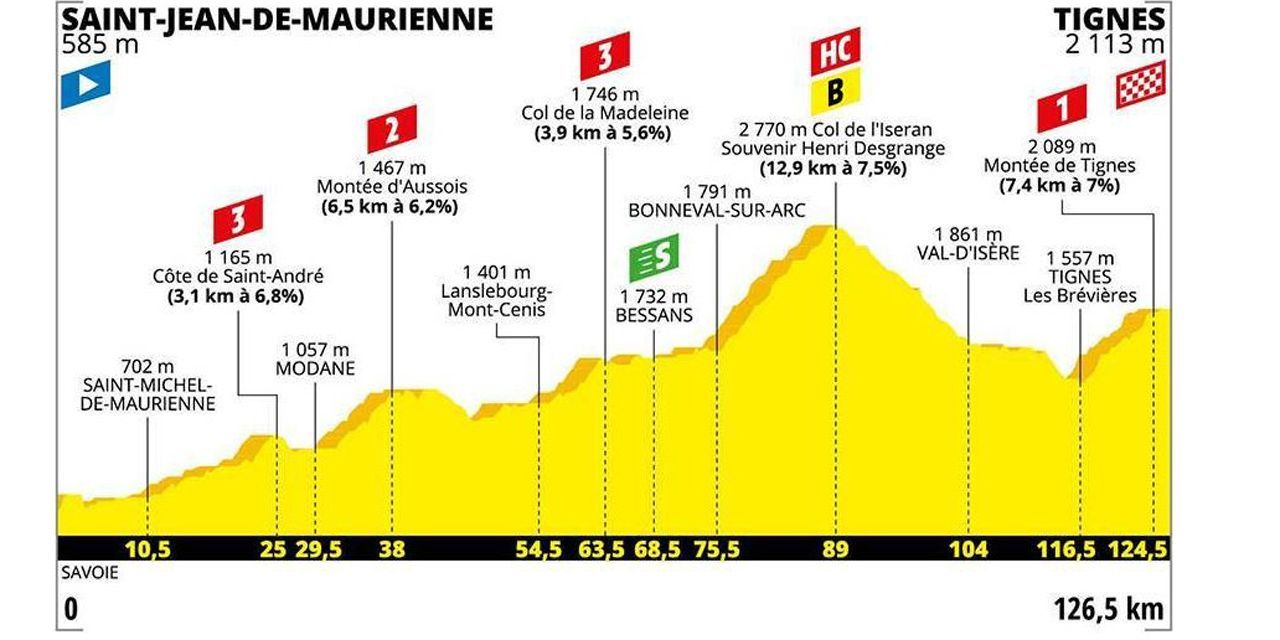ON DECRYPT
This Monday, the Tour observed his second day of rest in Nîmes. A day certainly welcome for the yellow jersey, Julian Alaphilippe, which showed some signs of fatigue on Sunday at the top of Foix Prat d'Albi. From Tuesday, it will remain the runner of the Deceuninck-Quick Step six days to end to end perhaps 34 years of famine on the Great Loop for French cycling, which expects a successor to Bernard Hinault since 1985. But over six days, three will count more than the others, since the stages of Tuesday, Wednesday and Sunday do not present any significant difficulty. It will also be during these three days that his compatriot Thibaut Pinot will try to make up for lost time to also walk in the footsteps of the Badger. Presentation of the hot spots where everything will be played.
THURSDAY: Izoard and Galibier, two myths and a descent
After two flat or almost flat stages around Nîmes on Tuesday and between Pont du Gard and Gap on Wednesday, the peloton will enter the hard on Thursday with the first alpine stage, perhaps "the hardest" of the three, in the same opinion of Thibaut Pinot. The program is hearty, with 208 km on the program and three climbs beyond 2,000 m: the Vars pass (1st category, 9.3 km at 7.5%), the Izoard pass (out of category, 14, 1 km to 7.3%) and the Col du Galibier (out of category, 23 km to 5.1%) to finish, before diving towards Valloire, the end of the stage.
If it seems highly unlikely that the fight between the favorites starts at the Vars pass, whose summit is located more than 125 km from the finish, it is not impossible that some are revealed from the Izoard , as the Luxembourger Andy Schleck had done on a similar course on the Tour de France 2011 (with finish at the top at Serre-Chevalier).
A little further, the Col du Galibier and 23 kilometers of regular climb offer a playground for those who wish to place an attack, especially as there is only 19 km downhill to reach Valloire then.
FRIDAY: towards an explanation at very high altitude at Iseran
On the other hand, Friday's stage will be the shortest of this alpine triptych: only 126.5 km, but five difficulties in the program. The first part of this 19th stage (with a 3rd category climb, a 2nd category climb and a 3rd category pass), where we should see a breakaway, is an appetizer before the big piece of day: the "roof" of the Tour, the Col de l'Iseran (12.9 km 7.5%), the highest road pass in Europe from its 2,770 m altitude and which will be borrowed for the eighth time only by the Great Loop.
The big arms should be explained, especially since it will remain only 35.5 km later, with the rise of Tignes (7.4 km to 7%), very hard in its first kilometers, for dessert. For those who will not tolerate the altitude, the differences could be significant on arrival.
SATURDAY: the final fight on the slopes of Val Thorens
This Tour de France is so tight and so many pretenders to attack the Alps that it is difficult to imagine that everything will be played before the last mountain stage on Saturday. This will lead the runners from Albertville to Val Thorens via three climbs, the Cormet de Roselend (1st category, 19.9 km to 6%), the Longefoix coast (2nd category, 6.6 km to 6.5% ) and, finally, the climb to Val Thorens (out of category): 33.4 km (!) to reach the highest French station.
If the average slope is moderate (5.5%) with a single kilometer to more than 9%, at the foot, the two previous days and the three weeks of the race should weigh in the legs. Since the stage of the Champs-Élysées most often resembles a criterium with a finish in the sprint, this will be the last chance for the candidates for the final victory to make the difference ...

